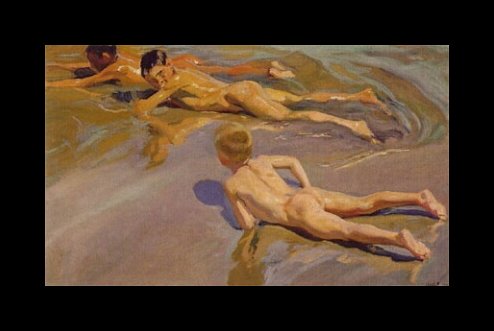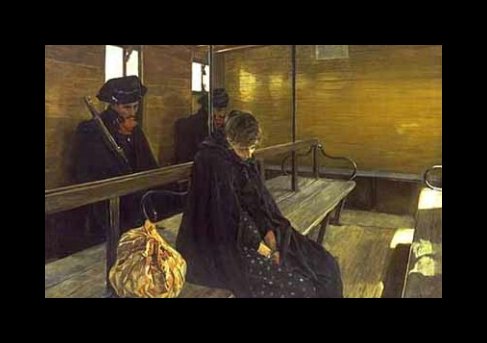Home » Joaquin Sorolla y Bastida (1863-1923)
Joaquin Sorolla y Bastida (1863-1923)
Get a Sorolla y Bastida Certificate of Authenticity for your painting (COA) for your Sorolla y Bastida drawing.
For all your Sorolla y Bastida artworks you need a Certificate of Authenticity (COA) in order to sell, to insure or to donate for a tax deduction.
Getting a Sorolla y Bastida Certificate of Authenticity (COA) is easy. Just send us photos and dimensions and tell us what you know about the origin or history of your Sorolla y Bastida painting or drawing.
If you want to sell your Sorolla y Bastida painting or drawing use our selling services. We offer Sorolla y Bastida selling help, selling advice, private treaty sales and full brokerage.
We have been authenticating Sorolla y Bastida and issuing certificates of authenticity since 2002. We are recognized Sorolla y Bastida experts and Sorolla y Bastida certified appraisers. We issue COAs and appraisals for all Sorolla y Bastida artworks.
Our Sorolla y Bastida paintings and drawings authentications are accepted and respected worldwide.
Each COA is backed by in-depth research and analysis authentication reports.
The Sorolla y Bastida certificates of authenticity we issue are based on solid, reliable and fully referenced art investigations, authentication research, analytical work and forensic studies.
We are available to examine your Sorolla y Bastida painting or drawing anywhere in the world.
You will generally receive your certificates of authenticity and authentication report within two weeks. Some complicated cases with difficult to research Sorolla y Bastida paintings or drawings take longer.
Our clients include Sorolla y Bastida collectors, investors, tax authorities, insurance adjusters, appraisers, valuers, auctioneers, Federal agencies and many law firms.
We perform Joaquin Sorolla Y Bastida art authentication, appraisal, certificates of authenticity (COA), analysis, research, scientific tests, full art authentications. We will help you sell your Joaquin Sorolla Y Bastida or we will sell it for you.


Though his youth was riddled with sorrow and tragedy, Sorolla somehow managed to become one of the greatest painters of light, joy and beauty in his time. Known for the way he captured beauty and light in his outdoor scenes, and grace and dignity in his portraiture’s, Sorolla is also one of the least recognized artists amongst his contemporaries.
At the age of two, Sorolla was orphaned when his parents contracted Cholera and died. While living with his aunt and uncle, Sorolla developed a love of art. By the time he was 15, he was studying painting in his hometown, and even took instruction from sculptor Cayentano Capuz and painter Francisco Pradilla. At 18, he was copying old master paintings at the Museo del Prado in Madrid.
After studying in Rome at the age of 22, Bastida became fascinated with light and mastered the technique that became his trademark. During this time, Sorolla and his colleagues formed a progressive group called “The Macchiaoli” which still has a following today. These artists are generally referred to as the Italian response to the Impressionist movement.
In these early years, before fully utilizing his full potential at painting light, Sorolla often produced paintings of religious or serious social meaning. One of these sad compositions are “Otra Margarita”, which portrays a downtrodden woman, and also “Sad Inheritance” (1899) a painting of laundry workers.

After this period, Sorolla seemed to lighten up a bit. From 1901 to 1905, he produced more than 500 oil paintings in plein air technique, which is painting outdoor scenes on location. He used a spontaneous approach and often left works looking unfinished, but managed to capture his subjects in a candid and intimate way that only a camera can produce today.
One of the reasons that a Sorolla work can be hard to distinguish is because of his indistinguishable style. Impressionist, Realist, Expressionist and Classicist—he has been called all of these, and in a sense, Sorolla is a culmination of them all. His beach scenes are like impressionist-style snapshots, but he was also able to produce beautifully detailed 17th century-styled portraits. He was commissioned to do portraits of famous people and nobility, such as President William H. Taft and King Alphonso and Queen Victoria Eugenie of Spain.
So how can you tell if you own a Sorolla? If it is a portrait, look at the color scheme. Does it mirror that of Goya, or any other Spanish master? Sorolla borrowed heavily from their classic color palates, giving his work a deep and velvety texture. If the work in question is a beach scene, pay close attention to details. If the water has a mirror-like quality and a brilliant shine, you may have a genuine Sorolla. Few painters have ever mastered the way he portrays reflection in water, and this is perhaps his greatest achievement. Evidence of this style can be seen in his famous “Two Sisters”; the girls on the beach are happy and the water beneath them sparkles as if alive. Most of Sorolla’s beach scenes take place in his hometown of Valencia, Spain, so look for evidence of that in his paintings as well. Sorolla also had a way of painting the opaqueness of thin fabrics (sheets, dresses), and they are always highly animated and billowy in his beach scenes as well.

While it is not likely that a portraiture of Sorolla’s would be uncatalogued or unknown, there are great possibilities for beach scenes and landscapes. Because he was so prolific, Sorolla created hundreds of beach paintings, which often went unsold at his salons and galleries. Could there be a lost Sorolla beach scene hanging on someones wall or hidden in an attic in Valencia or the United States? Most certainly.
During the span of his career, Sorolla was always in demand, but generally disliked or ignored due to newer styles of painting. Sadly, Cubism, Fauvism and Surrealism caught the attention of the art world, and his work was often dismissed as outdated and too classical. The beauty of children at play and common people living their lives was not of interest to his contemporaries.
One of Sorolla’s greatest achievements was a panel painting project that he was commissioned for from the Museum of Hispanic Society. He worked on this project for seven years (1912-1919) and the grueling work took it’s toll on the elderly artist. He suffered a stroke in 1920 and was able to produce little work after that due to paralysis. He died in 1923 while, ironically, painting a portrait in his garden.
Sorolla’s work is house all over Europe and the United States. A large collection of his work was willed to the people of Spain by Sorolla’s wife and is now housed at the Museo Sorolla in Madrid. While Sorolla may not be the best known Spanish painter, he certainly was able to capture light, joy and beauty in a time when political messages and abstraction reigned supreme.
Reviews
1,217 global ratings
5 Star
4 Star
3 Star
2 Star
1 Star
Your evaluation is very important to us. Thank you.
